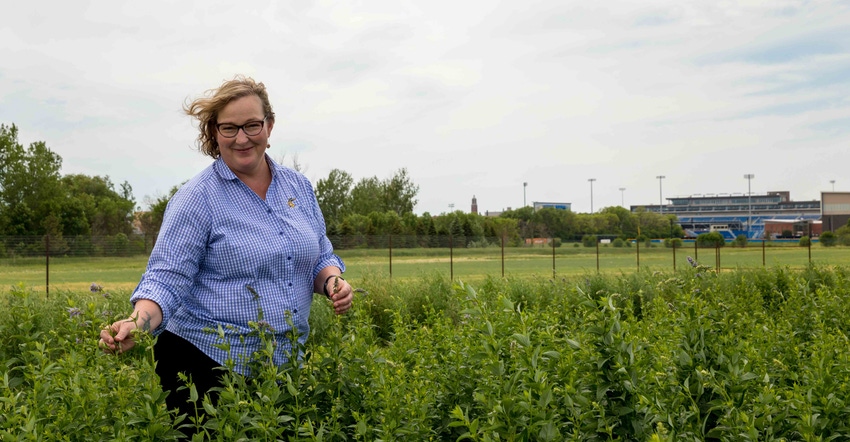August 23, 2021

New research shows that harvesting seeds from small plots of perennial wildflowers not only can provide producers with a new income source, but also improve soil health and, thereby, increase the sustainability of agricultural production.
That is the impetus behind a five-year, nearly $500,000 USDA National Institute of Food and Agriculture research project led by Lora Perkins, an associate professor in South Dakota State University’s Department of Natural Resource Management and a South Dakota Agricultural Experiment Station researcher.
“This is the decade for ecosystem restoration,” Perkins says. “The focus is on getting our native areas in better shape. But to do that, we need [native wildflower] seed.”
Currently, the demand for perennial native wildflower seed exceeds the available supply. “There is an unmet market,” she says.
The vision is to include perennial wildflowers in producers’ precision agriculture portfolios.
“We’re talking about small plots — any place that is less productive for corn and soybeans may work for these perennials,” Perkins says.
Other researchers have demonstrated that small plots of mixed-species native plants can provide large benefits to soil health. However, Perkins and former SDSU faculty member Shin-Yin Lee Marzano, now a research molecular biologist with the USDA Agriculture Research Service in Toledo, Ohio, are sowing only one wildflower variety in each plot to make the seeds more harvestable. These wildflowers also provide ecosystem services to bees and other pollinators.
5 types of wildflowers
Perkins and doctoral student Brett Lang are working with five types of wildflowers:
yellow giant hyssop
white prairie clover
prairie spiderwort
American licorice
Rocky Mountain blazing star
This year, the wildflower plots are alongside corn. Later, the researchers will plant them next to plots of soybeans.
To evaluate the wildflowers’ impact on soil health, the researchers will track nitrogen and carbon levels in the soil during multiple growing seasons. Perkins anticipates the soil health benefits may differ based on the spatial distribution of the perennials, as well the specific wildflower species.
“For any type of soil, any type of condition, there should be a native plant that wants to grow there,” she says. These native plants should not need fertilizer or irrigation because they are well-adapted for the conditions.
“The idea behind this grant is to demonstrate that we can put these wildflower perennials in a farm context across the landscape to get that seed, but that it also improves soil health, which benefits the crops and the producer,” Perkins says. “The goal is for this to be a viable endeavor. This should be good for the farmer and good for the ecosystem.”
Source: South Dakota State University Extension, which is responsible for the information provided and is wholly owned by the source. Informa Business Media and its subsidiaries aren't responsible for any of the content contained in this information asset.
You May Also Like




